Experimenting with beach coarse sand: Dealing with salt...
asclepiad_fan
5 years ago
last modified: 5 years ago
Featured Answer
Sort by:Oldest
Comments (14)
Stefan
5 years agolast modified: 5 years agoRelated Discussions
Remove or Amend Beach Sand?
Comments (32)I want to thank everyone who took the time to post such detailed and wonderful advice here! My renovation is finally done and I am getting ready to plant. At last! I have been closely reviewing all the suggestions and advice and have come up with what I hope is a good plan. I had 6" of sand removed, added an equal amount of compost and have irrigation going in as soon as I finalize my planting scheme. I have been using Pinterest to gather images of all the plants you recommended and narrow down selections. The San Marcos Growers site as well as some of the other links posted have been invaluable as a resource for what is available in my area and in helping select appropriate plants. I am attaching my plan. The house faces the ocean but there is a parking lot & a lot of tourist foot traffic in between so we put up a 4' wall with another 2' of semi-open wood fence on top. Also, just to the south west of the house is a large lifeguard station / maintenance area that isn't pretty to look at so the tree is placed to soften the view of that. Finally, the sides of the house remain sand in this plan. On the north side, there is only 16" to our property line and on the south side, the same plus another 3' that belongs to our neighbor. That area is needed for access and I'm not sure what else to do with it. I am imagining gravel would just get mixed in and covered with sand soon anyway? I guess we could pour concrete?) I am also including a link to my Pinterest page with the plant selection. There are a couple extras as I can't quite decide which Leucadendron & which Protea I prefer. I would love to hear any thoughts or comments before I start buying plants! Thanks again!...See MoreBeach sand affect oak tree health?
Comments (8)hey thanks for the responses, yes I am located in Santa Cruz. I was planning to use beach sand because its free (i live less than a mile from the beach). I would guess that one could buy sand? but is that sand any different from the sand at the beach...maybe, but where does sand come from? I just don't know. Maybe they steam clean it before they sell it to you? I did consider the roots of the tree, but I am guessing that they are much deeper than 4 inches from the surface? I also was thinking that a broken concrete walkway would still allow the dirt to breathe and not be too impacted. I was gonna plant creeping thyme between the pieces. Here is a link to the photo of the area (with the proposed walkway in blue). http://www.largescaledesign.com/byard/proposed_walkway_blue.jpg Note that since this photo was taken, I have already removed the two small tree stumps in the middle of the walkway. I dug down about two feet deep in order to remove them both. I do currently have mulch (tree chippings) covering the entire byard, primarily for weed abatement, until I get a plan together to develop some landscaping. Thanks again! -a...See MoreBeach sand is No no.
Comments (23)As with many other issues, I suppose there are different views... but being a newbie and after having read different responses, here and elsewhere, I'm more inclined to accept that beach sand is not a good thing. Thanks for your input :)) @lisasfbay9b I would say the proportion is say 1 to 8 in the smaller pots, 1 to 15 in the medium-sized ones and way bigger in the others, so yes, it might not be such a drama after all. As I said, the intent (alas, how mistakenly it seems now!) was to have a small layer of a material which, in principle, would always be dry (beach sand doesn't retain water, right?) so when the plant roots reached that level at the bottom of the pot they wouldn't be soggy or wet in case I over watered, hence they wouldn't rot. Yes, all the pots have holes, I'm newbie, but that I get! As per how salty... I'm not tasting it, huh (LOL!), seriously, I wouldn't know and I don't have the equipment to measure it. I can only say is natural beach sand from the beaches here in Barcelona. It's very fine sand. As per salting it out, well, since there are plants in the pots I don't want to overwater and then kill them. @rina_Ontario,Canada(5a) Regular soil means (to me as a 'city dweller') standard bagged soil you can purchase in 5,10,20 and 50L bags at most garden centres, and I believe in English is referred to as "potting soil", right? As per how are they doing, well, some are doing fine others no so much, but (a) it's been a recent plant out and (b) those that are not doing so well it might just well be that I'm a newbie and perhaps I'm watering too much, or perhaps they are too exposed to the sun.... or a thousand other things I might be doing wrong. As they say "always walk through life as if you have something new to learn and you will."...See MoreWhat's the Difference? Pacific sea salt v regular salt
Comments (11)btw I know there is a difference when measuring kosher, sea, and coarsely cut salt vs table salt. Appears the general rule of thumb is 2:1 coarse:table. Anyone have a breakdown on the difference? I'll go check and report back. But real life experience often trumps reference so... wow found a very informative salt site with great info http://www.foodsubs.com/Salt.html...See MoreSans2014
5 years agoasclepiad_fan
5 years agolast modified: 5 years agoniksouthafrica
5 years agorina_Ontario,Canada 5a
5 years agolast modified: 5 years agoasclepiad_fan
5 years agorina_Ontario,Canada 5a
5 years agolast modified: 5 years agoasclepiad_fan thanked rina_Ontario,Canada 5aasclepiad_fan
5 years agoJeff (5b)
5 years agoasclepiad_fan
5 years agorina_Ontario,Canada 5a
5 years agolast modified: 5 years ago
Related Stories
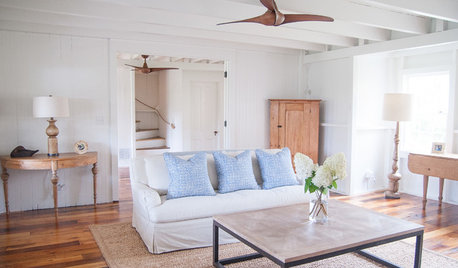
HOUZZ TOURSHouzz Tour: A Connecticut Beach House Builds New Memories
Extensive renovations make an 8-bedroom summer home ready for a family and many guests
Full Story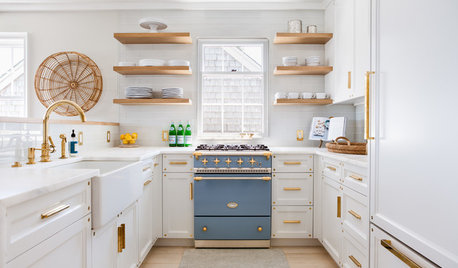
KITCHEN STYLESYour Guide to a Beach-Style Kitchen
Coastal palettes, open shelving and shiplap paneling are often found in these light and breezy rooms
Full Story
PETSDealing With Pet Messes: An Animal Lover's Story
Cat and dog hair, tracked-in mud, scratched floors ... see how one pet guardian learned to cope and to focus on the love
Full Story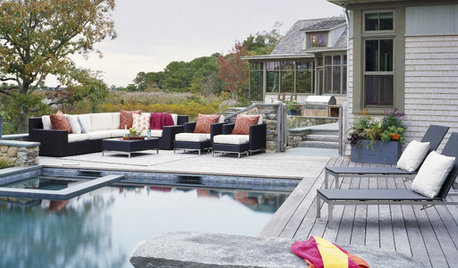
LIFE10 Smart Ways to Deal With Summer Gear
Start fall with a clean slate by organizing, repairing and storing summertime essentials the right way
Full Story
MOST POPULARBudget Beach House: A Trailer Gets Ready for Summer Fun
Punchy prints and colors star in a creative approach to Jersey Shore living
Full Story
HOMES AROUND THE WORLDMy Houzz: Renovated Aussie Beach Shack Nods to Italy
Young designers upgrade their inherited vacation house south of Melbourne, and make it a place to live and work full time
Full Story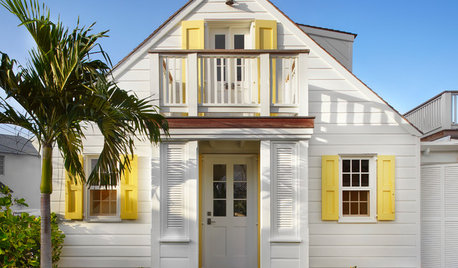
DECORATING GUIDES10 Small-Space Tips From Beach Cottages
Cozy doesn't have to feel cramped when you can trick the eye with color, height and scale
Full Story
MY HOUZZMy Houzz: Global-Inspired Color Transforms a Lavish Beach Home
See how a Southern California designer breathes enchantment, color and texture into her family’s coastal home
Full Story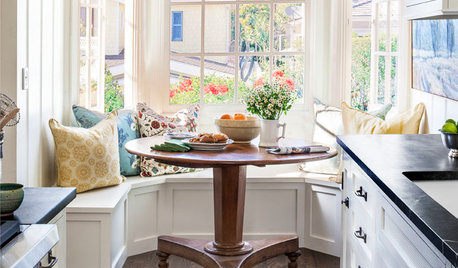
SMALL HOMESHouzz Tour: A Beach Cottage Gets Its Vibe Back
Historically accurate details restore the 1940s charm of a Laguna Beach home
Full Story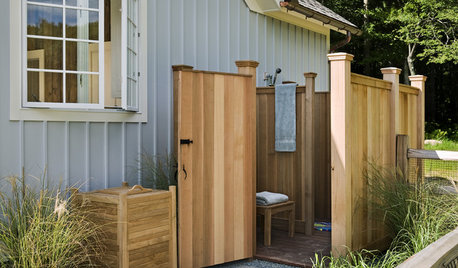
GARDENING AND LANDSCAPING10 Reasons to Love Outdoor Showers
Keep summertime dirt and sand outside with a shower area that turns an everyday routine into an exhilarating experience
Full Story




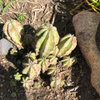
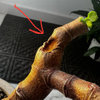

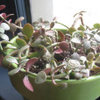
rina_Ontario,Canada 5a